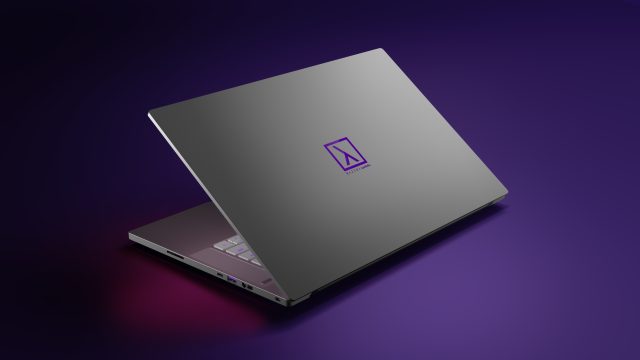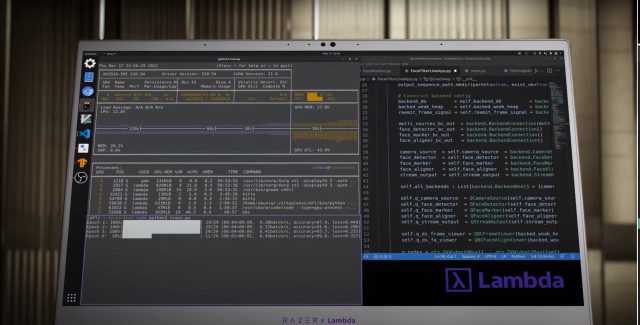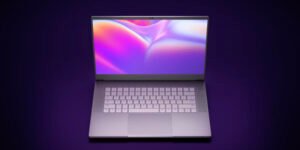
Lambda
Razer is primarily known for its gaming PCs and peripherals, but the company has also been known for dipping its toes into the productivity space from time to time. The Razer x Lambda Tensorbook announced Tuesday that the Razer will step even further out of its comfort zone. The Linux-based clamshell is made in collaboration with Lambda and focuses on the development of deep learning.
Lambda, which has been in existence since 2012, is a provider of deep-learning infrastructure used by the U.S. Department of Defense and “97 percent of the best research universities in the United States,” according to the company’s announcement. Lambda’s offerings include GPU clusters, servers, workstations, and cloud entities that train neural networks for a variety of applications, including self-driving cars, cancer detection, and drug discovery.

Lambda
Called “The Deep Learning Laptop”, Tensorbook has an Nvidia RTX 3080 Max-Q (16GB) and is aimed at machine learning engineers, especially those who lack a laptop with a discrete GPU and thus have to share the resources of a remote machine, which negatively affects development .
Tensorbook makes it easy to install PyTorch, TensorFlow, Caffee and Caffee 2 deep-learning frameworks, as well as GPU-focused applications CUDA and cuDNN, plus developer tools through Lamda’s one-line installation and managed upgrade path.
“When stuck with SSH on a remote server, you have none of your local data or code and even have a hard time demoting your model to colleagues,” Lambda co-founder and CEO Stephen Balaban said in a statement. notes that the laptop comes with PyTorch and TensorFlow for fast training and demonstration of models from a local GUI interface without SSH.

Lambda is not a laptop maker, so it recruited Razer to build the machine. Razer does not have Tensorbook for sale on its website as of this writing. However, the machine is similar to Razer’s laptops, from its light and thin construction (4.43 lbs / 0.66 of an inch thick) to its colorful keyboard, side-flanked speakers and fast screen. The 15.6-inch screen has a 165 Hz refresh rate at a resolution of 2560 × 1440.

Lamda
Tensorbook comes with a latest generation of Intel i7-11800H, which has eight cores and a base clock speed of 2.3 GHz, which can boost to 4.6 GHz. The machine also uses 64 GB DDR4-3200 RAM and has 2 TB PCIe 4.0 SSD storage.
While more powerful laptops are available, Tensorbook stands out because of its software package and Ubuntu Linux 20.04 LTS. Lamda also said that Tensorbook supports Windows dual-boot.
Gate selection is strong; the laptop has two Thunderbolt 4 ports, three USB-A ports (3.2 Gen 2), HDMI 2.1, a headphone jack and an SD card reader.
-
Left side.
-
Right side.
Lambda
Tensorbook currently costs $ 3,500.
